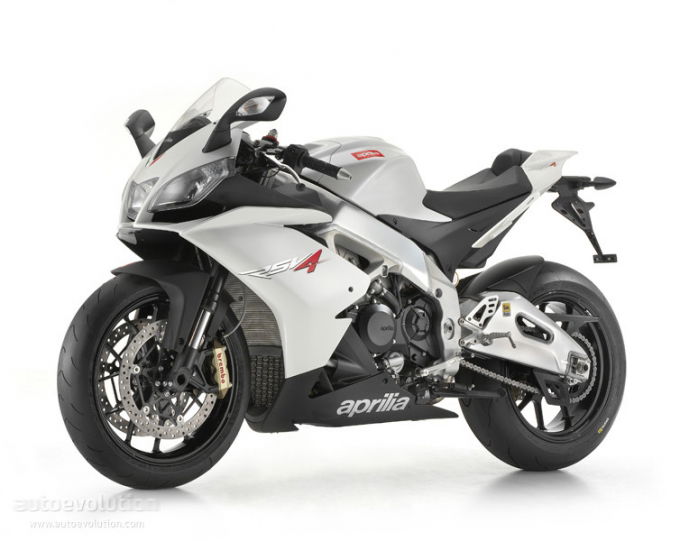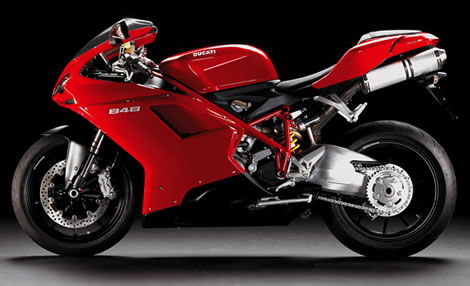RSV4 Factory (2010 - 2014) review
IF YOU WERE as surprised as we were that Aprilia could not only get their V4 project right first time, but then offer it to us fully laden with GP technology and exotic cycle parts for a penny shy of fifteen grand, then the launch of the more affordable ‘R’ version can only be good news.

IF YOU WERE as surprised as we were that Aprilia could not only get their V4 project right first time, but then offer it to us fully laden with GP technology and exotic cycle parts for a penny shy of fifteen grand, then the launch of the more affordable ‘R’ version can only be good news.
Just as they did with the RSV Mille, now that WSB homologation has been dealt with, a more affordable base model for the masses finds its way into dealers by mid November. Naturally, the ‘R’ variant loses some of the Factory bling, with the Öhlins forks and shock making way for Showa and Sachs; aluminium replacing magnesium for the engine cases; the adjustable frame and swinging arm geometry now predefined to keep things simple; likewise for the variable inlet ducts. The wheels are now cast aluminium instead of forged magnesium and the swathes of carbon fibre are absent. But these relatively minor changes knock a massive £2,550 off the asking price putting the Aprilia head-to-head with its Japanese rivals.
On the track, these changes are hard to spot without a back-to-back test. Sure, the Öhlins equipped Factory model is slightly leaner and meaner, but the feedback from the Showa forks and Sachs rear shock still instills plenty of confidence, encouraging me to push the excellent Metzeler Racetec Interact tyres harder with every passing lap.
Learning a circuit as complex and technical as Mugello isn’t easy in two short sessions, but the flexible motor is a massive help, once I’d worked out how to get the best from it. Rather than thrashing it everywhere, using the low down grunt to drag the bike out of the slower turns and holding the same gear all the way up to an impressive redline of 12,500rpm, the spread of power means less gear changes and less to think about, keeping the bike settled through the many direction changes.
Braking is another Italian forte, and an area that Aprilia haven’t skimped on for the base model, those same Brembo stoppers hauling the bike down from flat out along the famous Mugello straight at an indicated 284kph (176mph) to second gear for the tight San Donato hairpin with ease, the slipper clutch keeping the wheels in line effortlessly.
Overall it’s hard not to be impressed with the bike. The big question is whether you’d buy one and wish you’d extended the finance deal another year to have the much prettier, higher-specced Factory model instead.
One thing is for sure – now that it’s priced to compete with the Japanese inline clones, there really is a worthy fifth option – roll on the 2010 1000cc group test – we reckon the Aprilia could be in with a shout.
IF YOU WERE as surprised as we were that Aprilia could not only get their V4 project right first time, but then offer it to us fully laden with GP technology and exotic cycle parts for a penny shy of fifteen grand, then the launch of the more affordable ‘R’ version can only be good news.
Just as they did with the RSV Mille, now that WSB homologation has been dealt with, a more affordable base model for the masses finds its way into dealers by mid November. Naturally, the ‘R’ variant loses some of the Factory bling, with the Öhlins forks and shock making way for Showa and Sachs; aluminium replacing magnesium for the engine cases; the adjustable frame and swinging arm geometry now predefined to keep things simple; likewise for the variable inlet ducts. The wheels are now cast aluminium instead of forged magnesium and the swathes of carbon fibre are absent. But these relatively minor changes knock a massive £2,550 off the asking price putting the Aprilia head-to-head with its Japanese rivals.
On the track, these changes are hard to spot without a back-to-back test. Sure, the Öhlins equipped Factory model is slightly leaner and meaner, but the feedback from the Showa forks and Sachs rear shock still instills plenty of confidence, encouraging me to push the excellent Metzeler Racetec Interact tyres harder with every passing lap.
Learning a circuit as complex and technical as Mugello isn’t easy in two short sessions, but the flexible motor is a massive help, once I’d worked out how to get the best from it. Rather than thrashing it everywhere, using the low down grunt to drag the bike out of the slower turns and holding the same gear all the way up to an impressive redline of 12,500rpm, the spread of power means less gear changes and less to think about, keeping the bike settled through the many direction changes.
Braking is another Italian forte, and an area that Aprilia haven’t skimped on for the base model, those same Brembo stoppers hauling the bike down from flat out along the famous Mugello straight at an indicated 284kph (176mph) to second gear for the tight San Donato hairpin with ease, the slipper clutch keeping the wheels in line effortlessly.
Overall it’s hard not to be impressed with the bike. The big question is whether you’d buy one and wish you’d extended the finance deal another year to have the much prettier, higher-specced Factory model instead.
One thing is for sure – now that it’s priced to compete with the Japanese inline clones, there really is a worthy fifth option – roll on the 2010 1000cc group test – we reckon the Aprilia could be in with a shout.
Dimensions (default settings)
Max. length: 2040 mm
Max. width: 735 mm (at the handlebar)
Max. height: 1120 mm
Min. height from the ground: 130 mm
Saddle height: 845 mm
Centre to centre distance: 1420 mm
Trail: 105 mm
Steering angle: 24.5°
Kerb weight 179 kg *
Tank 17 litres (4-litre reserve included)
*Dry weight, without battery and fluids.
Engine capacity: 999.6 cc
Architecture: 65° V4
Power: 180 HP (132.4 kW) at 12,500 rpm Crankcase: monobloc with integrated cylinder liners
Timing system: 4 valves per cylinder (Titanium and Nymonic) operated directly by a camshaft driven by a mixed chain/gear system (lateral timing chain, central gear train)
Fuel system: Magneti Marelli electronic injection with 2 injectors per cylinder and integrated independent Ride by Wire system for each bank. Three mappings selectable from handlebar. Electronically controlled variable length intake ducts
Antivibration countershaft
Maximum rpm: 14,100 rpm
Compression ratio: 13:1
Transmission: 6-speed direct-control cassette gearbox
Clutch: multiplate wet clutch with mechanical slipper system
Exhaust system: 4 into 2 into 1 headers with oxygen sensor and single silencer with integrated catalytic converter and butterfly valve.
Max Speed: 186mph

